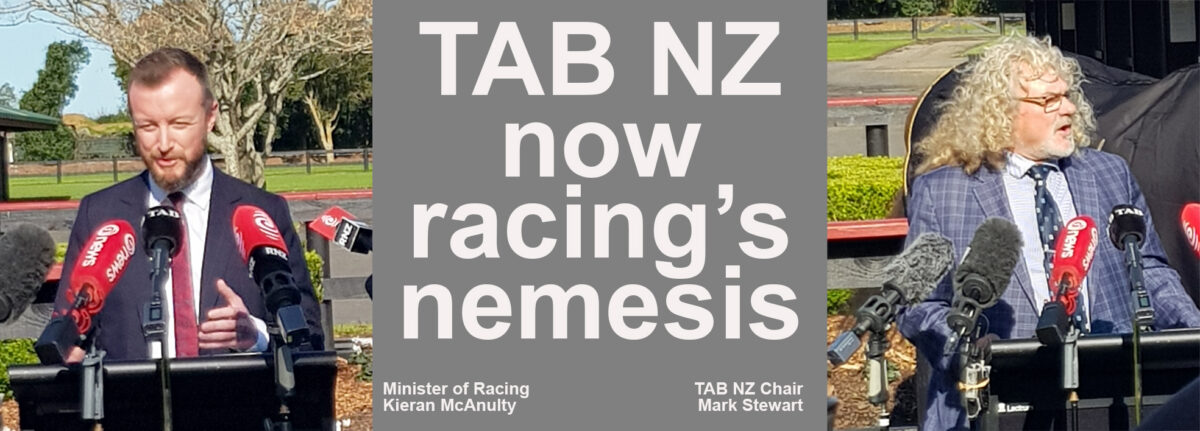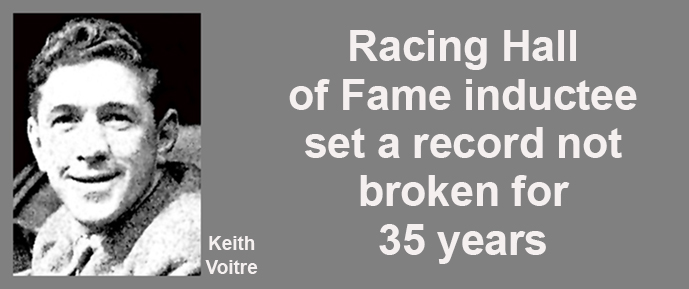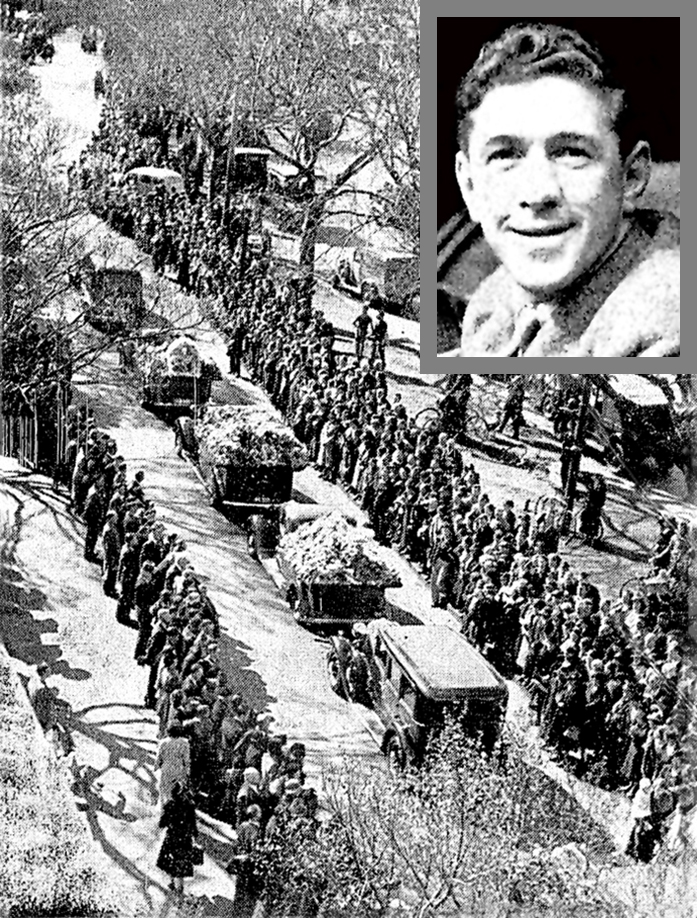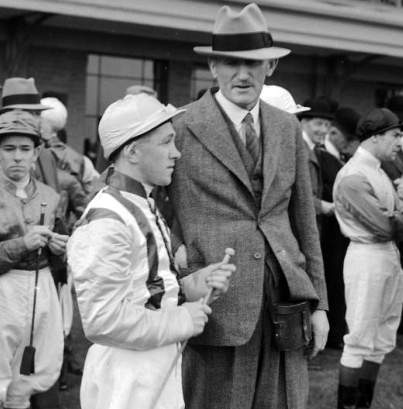by Brian de Lore
Published on 29 May 2023
The Entain deal is a fizzer for racing. That’s my view after learning the devilish detail of an agreement that’s more about the TAB’s survival and the Minister’s generosity with racing’s money than it is about arresting racing’s decline.
Racing’s $150 million cake already had the icing removed before the codes turned up to collect it. By that time the cake had a value of $89.5 million and the Entain/TAB partnership had divided it into five slices, each for yearly distribution with the largest slice five years away.
The deal is no game-changer for racing as Minister McAnulty claimed at the Karaka announcement on Tuesday. What it truly represents is a Government appeasement of a conglomerate of 28 sporting organisations who lobbied hard for a chunk of the icing, plus handouts to a Women Sports Initiative and gambling harm minimisation which comes in addition to the levy already applied.
No one denies that all these organisations don’t deserve funding, but they are already funded to exist and this is racing’s money and represents a chance to secure its own future sustainability. Is the Government vote-buying here in an election year at racing’s expense?
TAB intends retaining $40 million in reserve – Why?
Does it make you curious that Entain offers $150 million upfront and then in partnership with TAB NZ takes $40 million back to hold in reserve to add to the $90 million of cash and equity on the books from last season’s annual report? All this money theoretically generated for racing.
TAB NZ has fast become racing’s nemesis. The board is sport heavy, is Government controlled, seems weakly represented by racing, and displays no worthwhile concern for racing’s future.
On Tuesday at the signing, McAnulty told me: “I have a lot of faith in the racing industry and the people that work within it, but the playing field hasn’t been level for a long time, and in a country our size that competes overseas, we need to have the structures right.
“That’s why I’m such a big believer in re-establishing the monopoly for the TAB, one because it re-establishes the original intent of having a single wagering provider that then feeds back to sports and racing – racing predominantly and sports additionally. That has been eroded because of online overseas betting.
“By closing that loophole and saying that if you want to back NZ racing you can bet solely through the TAB and this will secure it for the future – I think that’s massive and that’s why I have been leading that work, and that’s also why I have announced that in-principle decision today alongside the signing of the agreement,” he concluded.
Marketed as a billion-dollar deal, but announced as $900 million over five years, the missing $100 million comes in as a contingency when/if the Government sees fit to geo-block Kiwi punters.
Only $20 million to the codes in year one, less the year after…
This is how the deal is structured: The upfront drip-fed $150 million eroded by $500,000 to the Women Sports Initiative, $15 million to 28 sporting entities, $5 million towards gambling harm minimisation, and $40 million for a reserve fund held by TAB NZ.
Leaving $89.5 million distributed to the three codes over five years:
- 2023/24 $20m
- 2024/25 $15m
- 2025/26 $15m
- 2026/27 $15m
- 2027/28 $25m
These miserable annual allocations became known via a radio interview with NZTR CEO Bruce Sharrock on Saturday. Out of the $20 million for next season, the thoroughbred code gets $11.5 million, a meagre pot of cash for stakes increases and badly overdue maintenance and infrastructure at various racecourses.
Sharrock: Stakes not seen as a priority
In an online article headed “Increase in stakes not seen as a priority” which appeared on the Herald website late last Thursday, a Sharrock quote stated: “We know we are getting more money for the next five years and, yes, some will go into stakes, but we also have to look at infrastructure like our tracks.”
Racing’s woes intensified at last Tuesday’s announcement when the Minister also revealed the TAB would relinquish its Class 4 gaming licence and remove 500 poker machines from TAB outlets around the country.
Last season the pokies brought in $23 million profit, allowing the sporting clubs of NZ to apply and be allocated grants totaling $6 to $7 million, but additionally, the codes will now be denied income of $15 to $16 million, out of which the Racing Integrity Board (RIB) gets its funding ($14.2 million in 2021/22 season).
How the RIB will be funded in the future and when this takes effect is uncertain, but it would be logical to assume it will come out of normal code funding. Six years ago the RIU cost $5.8 million for the season, but in the Racing Act of 2020 the legislation changed the RIU to give it autonomy and it became a board, and afterwards the then Minister of Sport and Racing, Grant Robertson, appointed a bunch of non-racing retired policemen associates to run it, and costs have risen 145 percent.
‘Three groups spend other people’s money – children, thieves, politicians. All three need supervision.’
It reminds me of an old saying: ‘Three groups spend other people’s money – children, thieves, politicians. All three need supervision.’
It’s hard to fathom the logic for giving up the Class 4 licence and poker machine income unless it’s a move to appease a growing anti-greyhound/horse racing, anti-gambling lobby for vote-catching in an election year.
On radio on Saturday, Minister McAnulty failed to justify the decision when he said:
“Attached to the monopoly proposal (geo-blocking), but not part of the agreement, in exchange for expanding the monopoly from onshore to online I negotiated with the TAB and they agreed they would relinquish their class 4 gaming licence and stick just to wagering, and so that would be a 500 poker machine drop to our country’s total – there would not be machines in TAB outlets anymore, and that means the TAB can focus just on wagering as it was intended to do right from the start.
“All I’m proposing we do is return to the initial intention of the TAB; that it’s the sole wagering operator in the country to the benefit of racing and sports.”
It’s obvious from that remark the Minister knows nothing about the history of the TAB and its beginnings. The thoroughbred and harness racing clubs of New Zealand put up £50,000 and a proposal to the Government in 1950 to financially support the clubs – no mention of the ‘sole wagering operator’ or ‘sport’ which never contributed to the set-up costs or shared in the TAB running expenses.
Barton prepared a 24-page report which quite clearly rules in favour of the clubs as having an irrefutable claim to the beneficial ownership of the TAB – Friday Flash 1995
He should also be reminded that in 1995, George Barton QC after a thorough investigation handed down a paper to the New Zealand Racing Conference saying the racing clubs of NZ had an irrefutable claim to the beneficial ownership of the TAB.
Also remember this: The Government appointed John Allen and Glenda Hughes to run the TAB and the incompetence of that pair cost racing a fortune. Against industry wishes, they built a soon-to-be redundant fixed odds betting platform for $50 million with huge ongoing costs to accommodate sport – did either the Government or Sport compensate racing for this debacle?
No, they didn’t, but as soon as a pot of cash turns up for racing, The Government steps in and wants to give to everyone else, and Sport is the first in line for a handout.
Sport should get some money, but not racing’s cash over and above the fair arrangement that’s written into the Racing Act of 2020. The Government should fund sport independently, just as it gave $136 million to Auckland’s last Americas Cup.
Racing contributes hundreds of times more to the NZ economy than the Amercas Cup ever will – 14,000 full-time employees and 45-50,000 participants and volunteers.
CEO Mike Tod takes his bonus and runs
This is a better deal for sport than racing. But why sign up for 25 years? What happens if this marriage of convenience for mutual profit needs a divorce after a 7-year itch? It won’t matter to the mercenary Mike Tod who already has lodged his divorce papers and is on the run with a big bonus.
Kieran McAnulty’s radio interview revealed several debatable thoughts. Have a read of them below and then post your thoughts in the ‘Leave a Reply’ box at the bottom of the page.
Minister of Racing Kieran McAnulty said:
“Tuesday was a hugely proud day for me personally and the highlight of my career.
“We are very fortunate position for a country of our size to be a world leader, but the industry is under threat, and the various aspects of it are under threat, not just in the domestic racing scene, not just our contribution to the Australian racing scene but also the $1.6 billion export industry that underpins the racing industry.“
(surely he meant $1.6 million)
“The TAB is at the centre of that, and always has been, and always will be. If the TAB falls over, then so does our industry.
“The deal will be game-changing for the New Zealand industry, but at the same time I wanted to give everyone in racing the Government’s commitment to secure racing’s future. We want people to have confidence to invest in horses, and we want sponsors to have confidence to invest in the racing industry. We are doing what we can to save it and keep it sustainable into the future.
“You will note that it was an announcement of an in-principle decision. Cabinet has given me the go-ahead to look into how we can secure the TAB further into the future. Normally you wait for a decision before you announce it – everyone that’s got an interest in this will be able to have a say and input into it.
“Let’s be clear about what this is; it’s a service agreement. It’s a 25-year arrangement. At the end of that the TAB still remains in New Zealand hands. What the agreement says to Entain is that we want you to give us a world-leading platform, your access to products, the odds that you offer, the competition with overseas operators that you provide a world-leading standard product that New Zealanders deserve, and our TAB is simply too small to provide.
“In exchange for access to that Entain takes a cut of 50 percent moving forward. The projections are that given the amount of money the TAB is losing to overseas providers because the TAB can’t compete, the TAB will still make more money, and still going to distribute more money to New Zealand racing and sports than it would do if it was left like it was. The key thing is that we get more out of this than we are perceived to be giving away.
“In terms of the Entain deal, the TAB will be restricted to wagering products only, they won’t be allowed to do online casinos and won’t be allowed to do online pokies. But there is the potential for Entain to allow what they call Novelty Betting – betting on elections or things that aren’t sport or racing.
“I’m proposing that for novelty events, the same proportion is used, but the profit goes to gambling harm – it’s a progressive approach to expand the TAB product and in exchange for that we take harm minimisation seriously and fund it properly.
“Attached to the monopoly proposal, but not part of the agreement, in exchange for expanding the monopoly from onshore to online I negotiated with the TAB and they agreed they would relinquish their class4 gaming licence and stick just to wagering, and so that would be a 500 poker machine drop to our country’s total – there would not be machines in TAB outlets anymore, and that means the TAB can focus just on wagering as it was intended to do right from the start.
“All I’m proposing we do is return to the initial intention of the TAB; that it’s the sole wagering operator in the country to the benefit of racing and sports.
“We have to think about the situation we were facing, that the TAB would have fallen over within three years and racing have had less and less money to distribute around the country, and this agreement changes that.
Footnote:
If novelty betting comes in, and it sounds as though it’s over the line, my advice to the Hon Minister of Racing, Kieran McAnulty, is to mortgage his house and have a decent bet on a National-Act coalition new government landslide result in October – go 13+.





